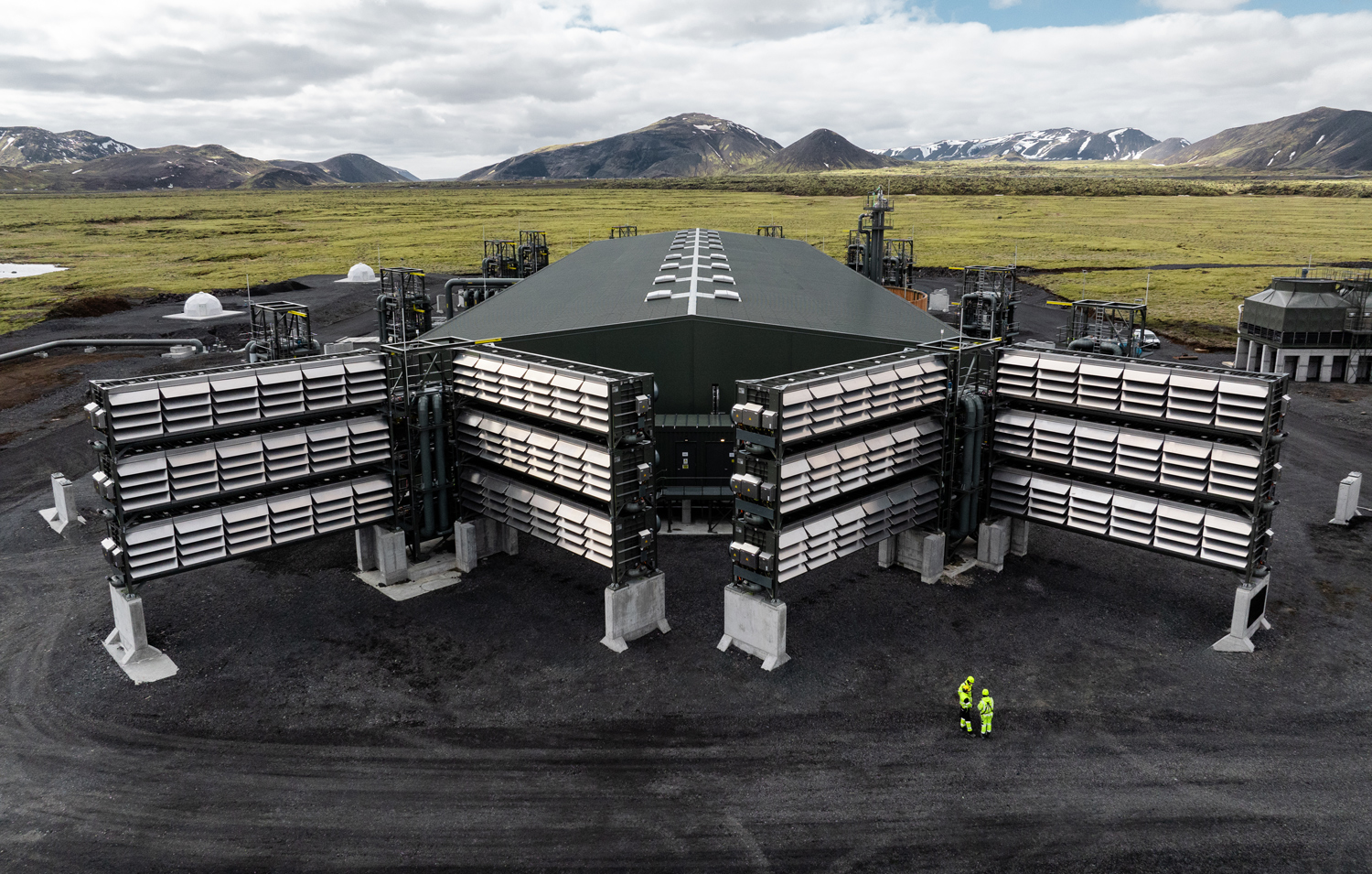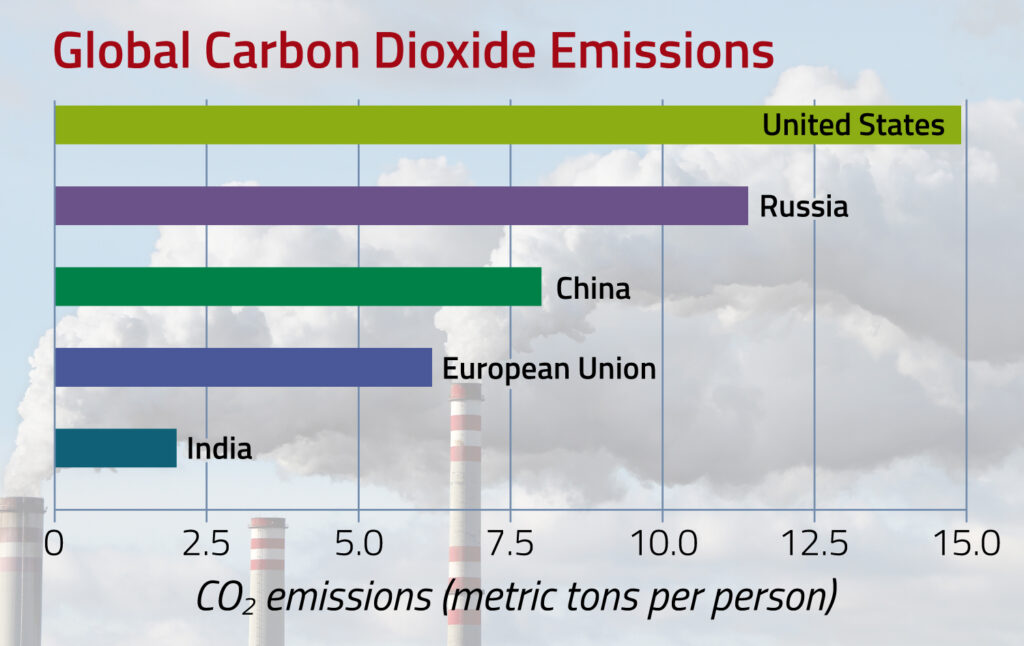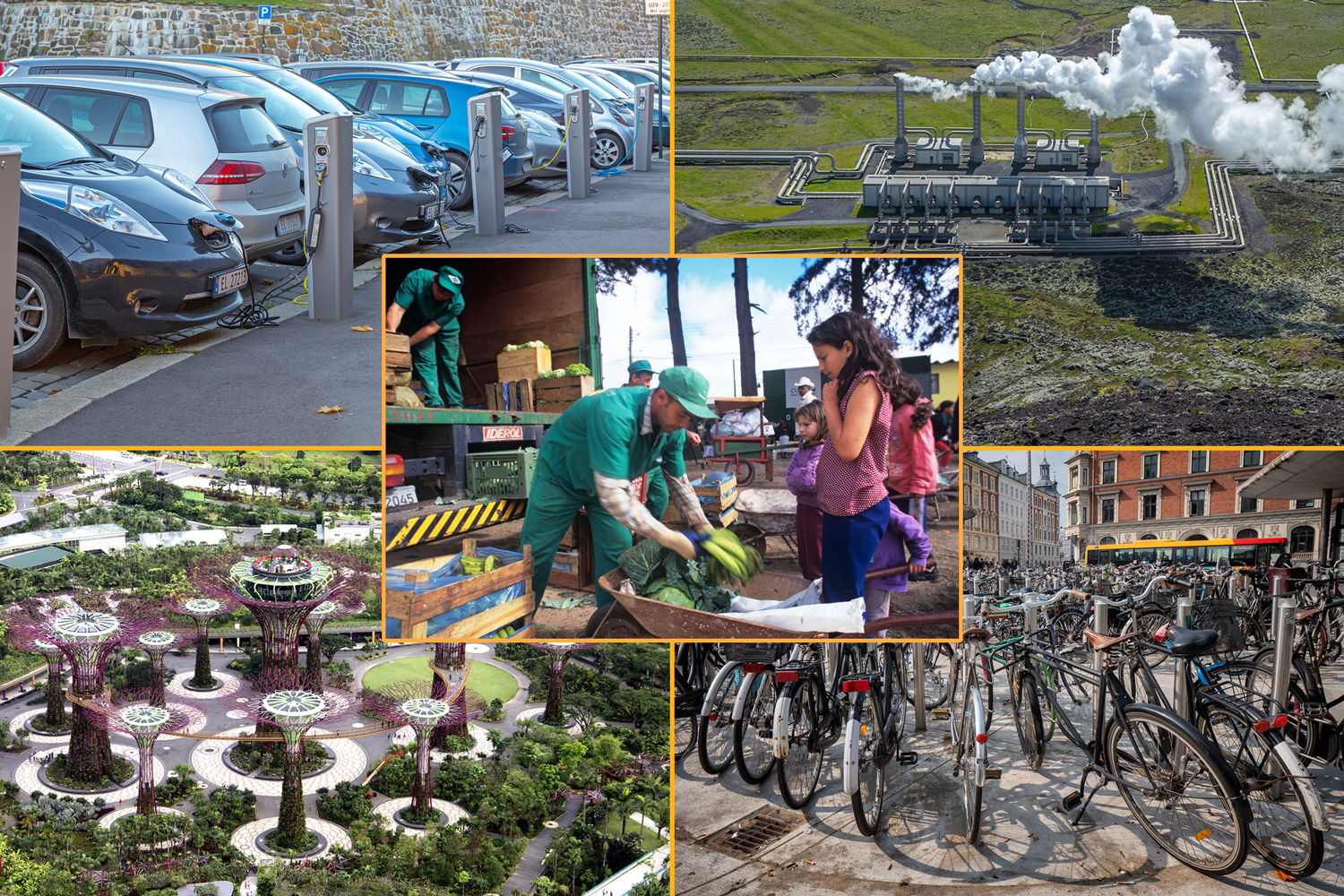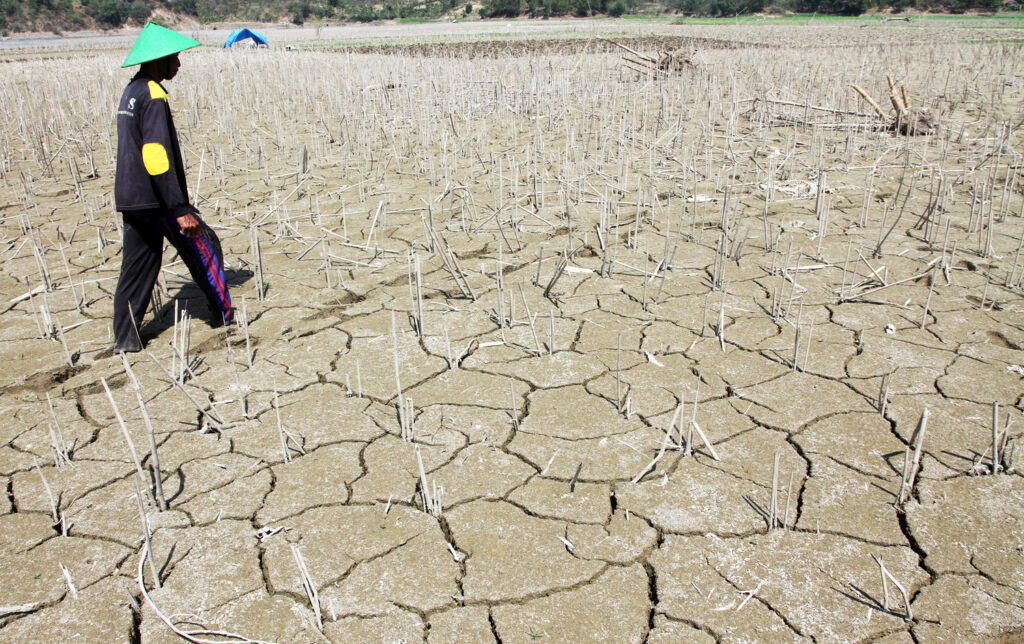Vacuuming the Atmosphere
A new plant in Iceland is designed to address climate change by sucking carbon out of the atmosphere.

As the world continues to add carbon dioxide to the atmosphere, a company called Climeworks aims to do the opposite. Recently, Climeworks opened a plant in Iceland that’s designed to suck the carbon out of the atmosphere like a vacuum cleaner. Climeworks says it’s the largest plant of its kind so far.
The plant uses a technology called direct air capture (DAC). DAC technology sucks in air and then uses chemical reactions to remove the carbon dioxide from it. The carbon dioxide can either be used for some other purpose, like growing plants, or injected into the ground. Climeworks will send the carbon it captures deep underground, where it will naturally turn to stone. Otherwise, that carbon dioxide would remain in the atmosphere, contributing to global warming and other forms of climate change. The video below demonstrates how the giant vacuum works.
© 2024 Climeworks AG
This is Climeworks’ second DAC plant and one of several around the world, with more in the works. But the growth of DAC doesn’t mean the climate crisis is solved. Combined, all the DAC plants on the planet capture a very small percentage of the carbon dioxide produced in the world. Experts say we’ll still need to produce less carbon dioxide to tackle the climate crisis.
Climeworks and other companies plan to build additional DAC plants—bigger ones that can remove even more carbon. But even the head of Climeworks agrees people and governments need to do more to curb climate change.
“Whether we are taking the right direction will depend as much on societal things [as] on technical matters,” Carolos Haertel told 60 Minutes. “Am I optimistic as an engineer? I am, absolutely. Am I optimistic as a citizen? Maybe half [and] half. I haven’t made my mind up yet.”



